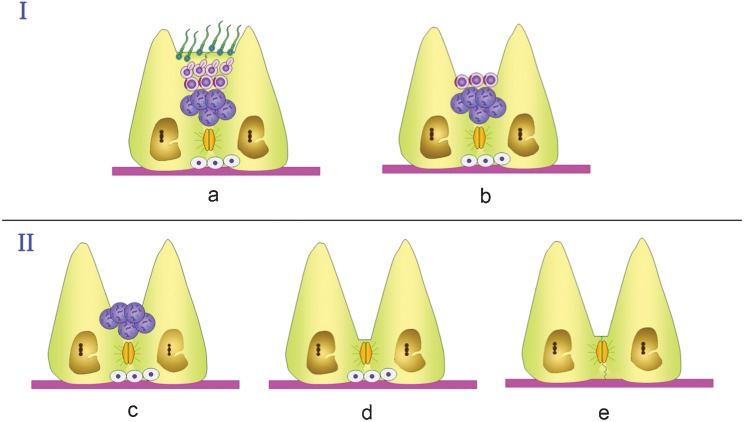Figure 2.
Schematic summary of the types of seminiferous epithelium impairment that can lead to infertility in men. Group I summarizes pathologies in which germ cell arrest occurs at spermiogenesis. (a) Presents an apparently normal seminiferous tubule with apparently normal sperm and elongated spermatids as the most advanced cell types present. Several pathologies show a morphologically normal seminiferous epithelium, as depicted, but sperm can still present a pathological condition and therefore be unable to fertilize an egg. Many of these cases can be solved by using ART, i.e., testicular sperm extraction (TESE) combined with ICSI. (b) Arrest at the level of round spermatids, which can be used for ROSI (round spermatid injection). This type of arrest is rare. Group II represents arrest at the levels of (c) spermatocytes (12.5 % of cases) or (d) spermatogonial cells (1.7 % of cases) and (e) total absence of germ cells, as in SCO syndrome (estimated to occur in 16.5 % of cases, based on data from Tuttelmann (2010) (3), with detailed etiological entities including chromosomal aberrations, as in Klinefelter (11), XX males (12), translocations (13,14) and microdeletions at the level of the AZF regions of the Y chromosome (15,16). Prevalence data are from McLachlan et al. (2007) (5), except for the SCO data (3).

